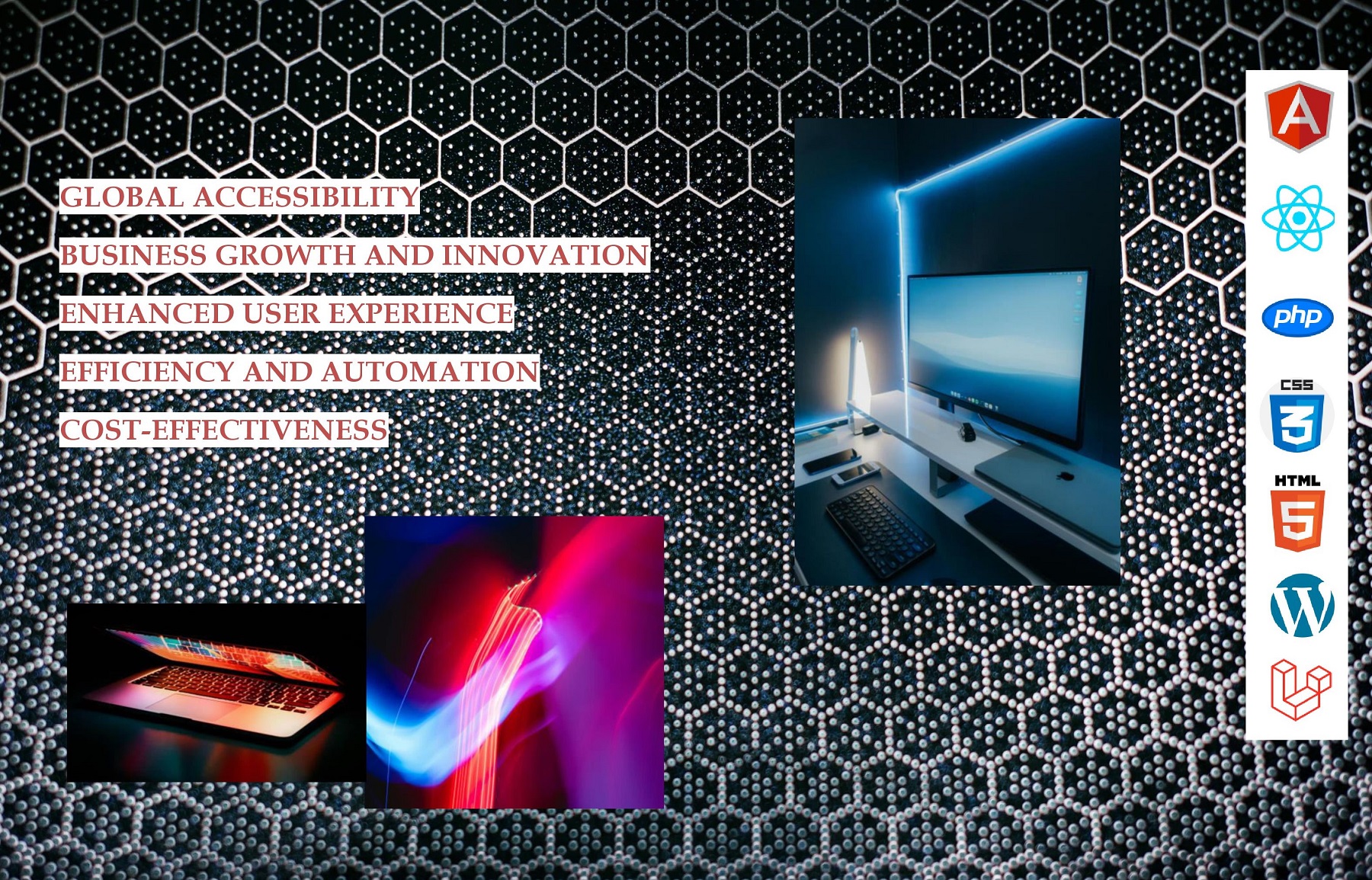
We develop websites and web applications to perform a wide range of tasks to deliver functional, user-friendly, and visually appealing digital products. These functions span the entire development lifecycle, from initial planning and design to deployment and ongoing maintenance. Here’s a detailed breakdown of the key functions:
Client Consultation and Needs Assessment
- Requirement Gathering: Understanding the client’s business goals, target audience, and specific needs.
- Stakeholder Interviews: Conducting interviews with key stakeholders to gather insights and expectations.
- Project Scoping: Defining the scope of the project, including timelines, deliverables, and budgets.
Planning and Strategy
- Project Planning: Creating a detailed project plan that outlines tasks, milestones, and resources.
- Technology Stack Selection: Choosing the appropriate technologies, frameworks, and tools for the project.
- Risk Assessment: Identifying potential risks and developing mitigation strategies.
Design
- User Experience (UX) Design: Creating wireframes and prototypes to outline the user journey and interaction flow.
- User Interface (UI) Design: Designing the visual elements, including layout, colors, typography, and imagery.
- Responsive Design: Ensuring the design works seamlessly across different devices and screen sizes.
Front-End Development
- HTML/CSS/JavaScript: Writing clean, semantic code to build the structure, style, and interactivity of the website or web app.
- Frameworks and Libraries: Utilizing frameworks like React, Angular, or Vue.js to streamline development and enhance functionality.
- Cross-Browser Compatibility: Ensuring the website or app works consistently across different web browsers.
Back-End Development
- Server-Side Programming: Developing server-side logic using languages like PHP, Node.js.
- Database Management: Designing and managing databases using systems like MySQL, PostgreSQL, MongoDB, or Firebase.
- API Development: Creating APIs to enable communication between the front-end and back-end, and to integrate with third-party services.
Integration
- Third-Party Services: Integrating third-party services such as payment gateways, social media platforms, and analytics tools.
- Content Management Systems (CMS): Implementing CMS platforms like WordPress, Drupal, or Joomla for easy content management.
- E-commerce Solutions: Integrating e-commerce platforms like Shopify, Magento, or WooCommerce for online stores.
Testing and Quality Assurance
- Unit Testing: Testing individual components or units of code to ensure they function correctly.
- Integration Testing: Ensuring that different modules or services work together as expected.
- User Acceptance Testing (UAT): Conducting tests with real users to validate the functionality and usability of the website or app.
- Performance Testing: Assessing the speed, responsiveness, and stability of the website or app under various conditions.
Deployment and Launch
- Hosting Setup: Configuring servers and hosting environments to deploy the website or app.
- Domain Configuration: Setting up and configuring domain names and DNS settings.
- Launch Planning: Coordinating the launch process, including final checks and communication plans.
Post-Launch Support and Maintenance
- Bug Fixes: Addressing any issues or bugs that arise after the launch.
- Updates and Upgrades: Regularly updating the website or app to add new features, improve performance, and enhance security.
- Monitoring and Analytics: Using tools like Google Analytics, New Relic, or Datadog to monitor performance and user behavior.
Security
- Data Protection: Implementing measures to protect user data and ensure compliance with regulations like GDPR or CCPA.
- Secure Coding Practices: Following best practices to prevent vulnerabilities such as SQL injection, cross-site scripting (XSS), and cross-site request forgery (CSRF).
- SSL/TLS Certificates: Ensuring secure communication by implementing SSL/TLS certificates.
SEO and Digital Marketing
- Search Engine Optimization (SEO): Optimizing the website or app to improve its visibility and ranking on search engines.
- Content Strategy: Developing a content strategy to engage users and drive traffic.
- Social Media Integration: Integrating social media platforms to enhance user engagement and sharing.
Training and Documentation
- Client Training: Providing training sessions for the client’s team on how to use and maintain the website or app.
- Technical Documentation: Creating comprehensive documentation for developers, administrators, and end-users.
Continuous Improvement
- User Feedback: Collecting and analyzing user feedback to make ongoing improvements.
- A/B Testing: Testing different versions of the website or app to determine which performs better in terms of user engagement and conversion rates.
- Performance Optimization: Continuously optimizing the website or app for speed, efficiency, and scalability.
Benefits of Website and Web App Development Services
- Enhanced User Experience: A well-developed website or app provides a seamless and enjoyable user experience.
- Increased Business Efficiency: Automating processes and improving workflows can lead to greater business efficiency.
- Scalability: Developing scalable solutions that can grow with the business.
- Competitive Advantage: A robust and user-friendly digital presence can differentiate a business in a crowded market.
With these functions, we develop website and web app to help businesses create digital products that not only meet their immediate needs but also provide a foundation for future growth and success.
